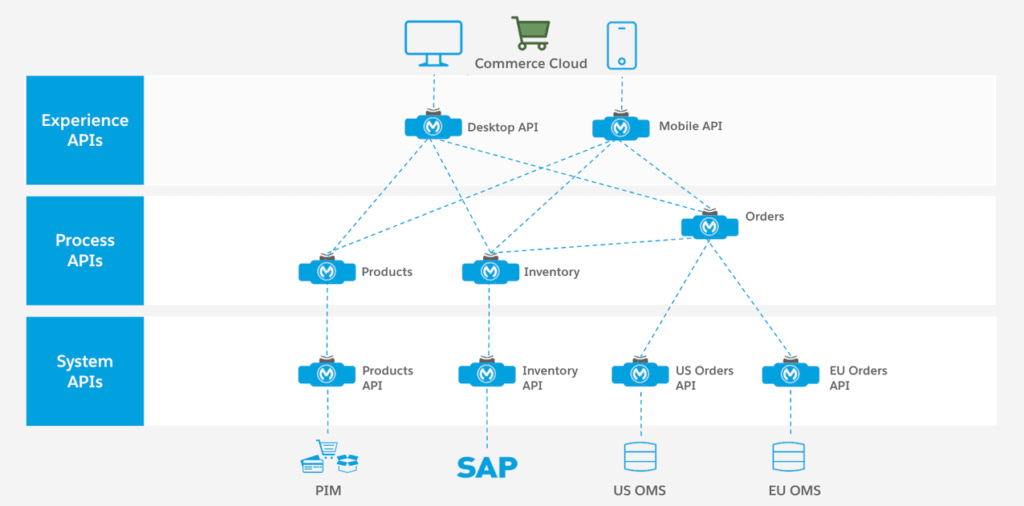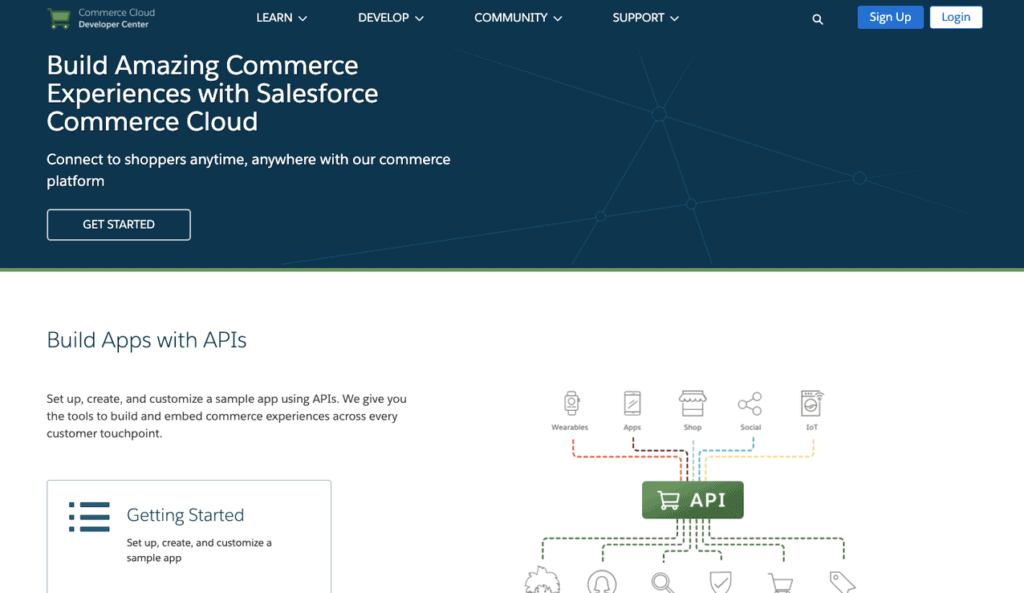In previous blogs, we dug into the various ways Salesforce has transformed internal processes using MuleSoft technology. With MuleSoft, Salesforce has streamlined employee onboarding and built reusable assets for a more seamless M&A process. This blog will review another use case, specifically Salesforce’s move to B2C headless commerce, and is the next in this series of how Salesforce uses MuleSoft.
What’s going on in commerce?
COVID-19 has put a spotlight on eCommerce as drastic changes in consumer behavior are accelerating the shift from in-store retail to online. Retailers are pivoting quickly to open new digital revenue channels, while existing eCommerce businesses are adapting their operating models by building new ways to reach their consumers, like curbside pickup and delivery apps. Whether in-store or online, retailers across the board are realizing the need to innovate faster than ever before and to build a foundation that can adapt to changes in the future.
Even beyond COVID-19, the digital landscape has changed immensely in the last decade. The rapid rise of smartphones means retail brands need to innovate quickly with sleek front-end designs and focus on building out optimized, connected customer experiences. The rapid innovation that leads to the connected customer experiences required today is made possible through what is widely known as headless commerce. Traditional commerce architecture is tightly coupled with out-of-the-box commerce storefront templates, requiring developers to synchronously modify both front-end and back-end code when building new commerce experiences. Headless commerce, on the other hand, separates the infrastructure layer from the APIs, decoupling the underlying commerce engine from UX/UI layer for faster, asynchronous development.
Ultimately, headless commerce gives developers and IT teams autonomy over the customer experience based on the immediate needs of a brand. It enables a flexible deployment with decoupled layers of commerce services, scalability to pivot quickly, and the speed to make accelerated updates.
And what lies at the core of headless commerce are APIs and API-led connectivity. By componentizing the business and using commerce APIs to deliver services between the front and back-end, brands have the flexibility to power a wide range of omnichannel experiences. Using API-led connectivity, developers enable commerce anywhere and seamlessly integrate with other content management systems. Today, we will discuss how Salesforce B2C Commerce has transformed to enable rapid innovation and ensure a future-proof foundation with headless commerce.
API-led connectivity for B2C Commerce
Established as a Salesforce Cloud in 2016, Commerce Cloud is the world’s leading B2C and B2B commerce solution, and was recently named a leader in The Forrester Wave™: Q2 2020 report. Salesforce B2C Commerce is a multi-tenant, cloud-based commerce platform that empowers brands to create intelligent, unified buying experiences across all channels — mobile, social, web, and store.
While the commerce platform was seeing immense success in helping top retailers transform, the B2C team saw early signs of an industry shift toward headless commerce, and knew that in order to maintain their rapid innovation in the future, they needed to build out capabilities that enable developers to build quickly and securely. So Commerce Cloud turned to MuleSoft and using an API-first approach to develop.

To make these operational changes and transition to API-led connectivity, the B2C Commerce team worked with MuleSoft to build out a cross-functional team (called a Center for Enablement) set out to drive this operating model transition and champion API-led connectivity, enabling developers to build out front-end experiences, faster. To start, they worked with B2C Commerce product managers who championed a design-first approach, building APIs on MuleSoft. The Commerce Cloud team focused on building APIs that required the highest security standards, leveraging MuleSoft’s out-of-the-box security tools to get these APIs up and running quickly. Additionally, the teams prioritized building assets that could be reused across the organization and made them available on Anypoint Exchange as discoverable assets. Now, with MuleSoft and an API-led approach, B2C Commerce is faster and more innovative than ever.
Exposing APIs and creating a developer community
While Commerce Cloud was setting itself up for success and future innovation internally, customers and partners were asking for that same opportunity to innovate. Specifically, they requested B2C Commerce expose more APIs publicly so that partners could build capabilities on Commerce Cloud and customers could build their own apps leveraging Commerce Cloud data.
To do this, Commerce Cloud needed a site to expose APIs and handle all developer-related activities. The Commerce Cloud team leveraged MuleSoft’s API Community Manager. Built on Salesforce Community Cloud, API Community Manager transforms developer portals into personalized digital experiences that promote API products and increase engagement across an API ecosystem. These communities empower app developers, partners, and employees with the self-service resources and support they need to be successful, and the Commerce Cloud Developer Center (CCDC) does just that – enabling developers to discover new Commerce Cloud APIs, software development kits and toolkits.

Commerce Cloud also wanted to create a community for their developers to continue enhancing the Commerce Cloud ecosystem. CCDC provides a place for developers to learn how to build on the Commerce Cloud platform through API documentation, reference architectures, solution kits, and trails on Trailhead. It also offers a community forum and blogs where developers can get feedback, ask questions and learn from experts and the wider Commerce Cloud developer community.
The Commerce Cloud Developer Center is truly the one-stop-shop for Commerce Cloud developers. It provides our customers with what they need to build headless apps quickly, and gives Commerce Cloud the structure it needs to innovate and introduce new services and features going forward.
Andrew Lawrence, Director of Product Management, Commerce Cloud
Since transitioning to an API-led connectivity approach and exposing APIs with CCDC, Salesforce B2C Commerce has truly decoupled APIs from the platform, unlocked data, and enabled headless commerce for their customers. The CCDC already has over 2,500 developers in the community leveraging the 20+ APIs now available on the platform. Overall, developers using the CCDC appreciate its ease of use and are making Commerce Cloud a future-proof commerce platform.
With the Commerce Cloud Developer Center, any developer can become a commerce developer by taking advantage of the latest B2C innovation, best practices including documentation, solution kits, Trailhead, and participate in the thriving community. Be sure to visit the CCDC in late July, for the GA of new headless commerce developer toolkit (currently in beta on the CCDC) including a Salesforce Commerce API, sample storefront app, and commerce SDK to easily build and extend headless commerce experiences.









